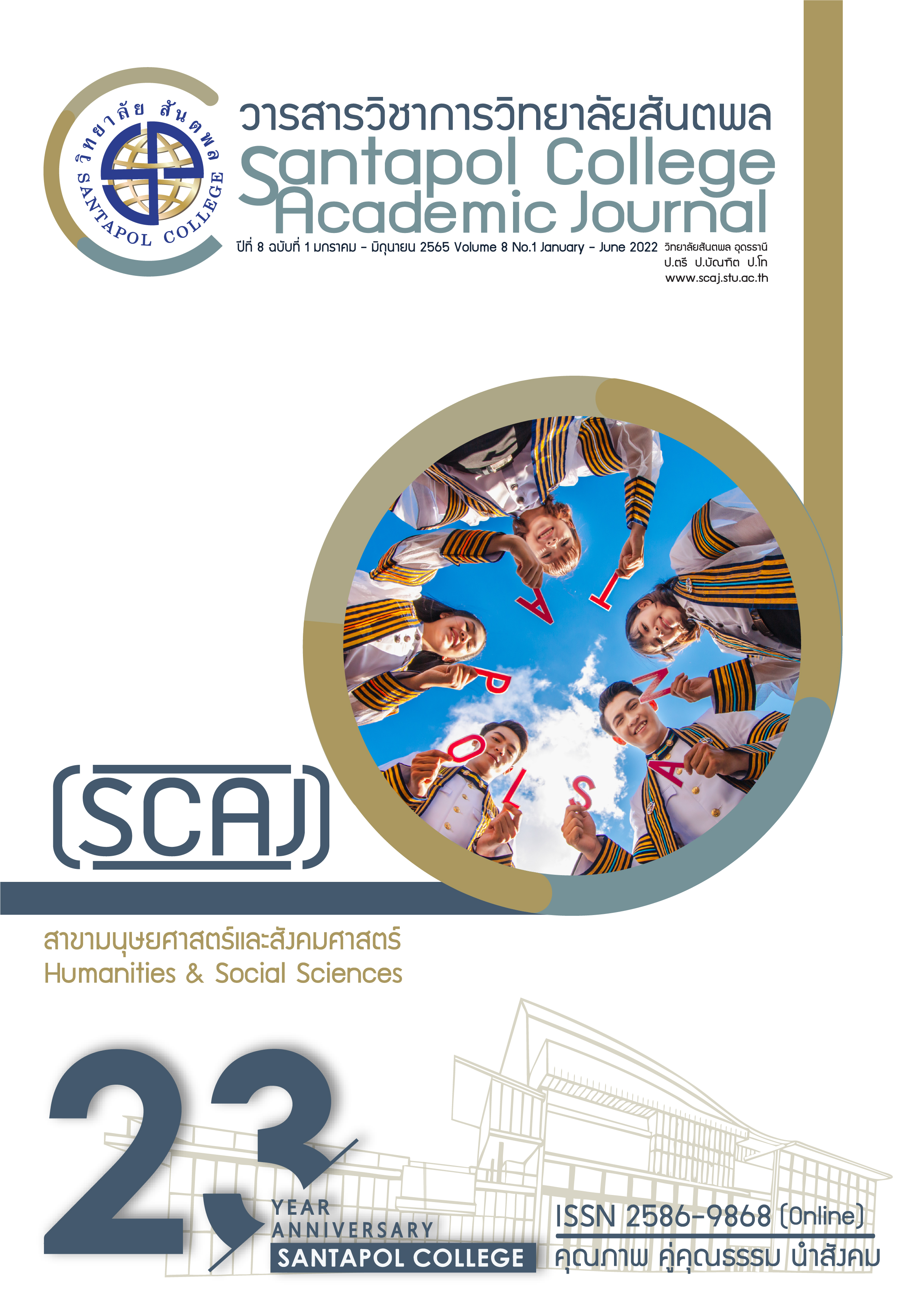STUDENTS PUNISHMENT MODEL AND GUIDELINES FOR APPROPRIATE STUDENTS PUNISHMENT CONTROL IN SCHOOL
Main Article Content
Abstract
The objectives of this research were to 1) study the punishment patterns of teachers in educational institutions under the Office of Nongkhai Primary Educational Service Area 2; 2) find the relationship between teachers' personal factors and the choice of punishment styles in the schools; 3) study the key conditions in teachers’ choices of punishment styles in schools under the Office of Nongkhai Primary Educational Service Area 2 and 4) find an approach to control the punishment of students according to the framework of the Ministry of Education. The population in the research was 843 government teachers and educational personnel. A questionnaire was the research tool used with the quantitative sample of 271 people that were selected by using Taro Yamane's tables. Purposive sampling was used to choose the qualitative sample of 10 people and interviews were used as the tool. In addition, the statistics used in the research were determination of frequency distribution, percentage, chi-square statistics and cross tabulation statistics.
The following are the results of the research. 1) Most teachers chose the form of punishment according to the regulations prescribed by the Ministry of Education such as parole, reprimand, behavior score reduction and activities to change behavior. 2) There was no relationship with the choice of student punishment style that related to the personal factors of teachers in terms of gender and having a child or taking care of a child in foster care. However, the personal factors in terms of position, length of government service, academic standing.
Article Details

This work is licensed under a Creative Commons Attribution-NonCommercial-NoDerivatives 4.0 International License.
เนื้อหาและข้อมูลในบทความที่ลงตีพิมพ์ในวารสารวิชาการวิทยาลัยสันตพล ถือว่าเป็นข้อคิดเห็นและความรับผิดชอบของผู้เขียนบทความโดยตรง ซึ่งกองบรรณาธิการวารสารไม่จำเป็นต้องเห็นด้วยหรือรับผิดชอบใดๆ
References
ถวิล อรัญเวศ. (2561) .ลงโทษนักเรียน นักศึกษาอย่างไร จึงจะไม่ถูกผู้ปกครองฟ้องร้องความผิด. สืบค้นเมื่อวันที่ 15 เมษายน 2564. จาก https://www.obec.go.th/archives/677.
ธัญญ์นภัส วิรัตน์เกษม. การพัฒนารูปแบบการมีส่วนร่วมด้านพฤติกรรมคุณธรรมจริยธรรมในวิถีชีวิตความปกติใหม่ (New Normal) ของนักเรียนโรงเรียนเทศบาลวัดโพธิ์ จังหวัดชลบุรี. วารสารวิชาการวิทยาลัยสันตพล, 7(2), 114 – 127.
นันท์นลิน อินทะนัก. (2563). ปัญหามาตรการทางกฎหมายเกี่ยวกับการลงโทษโดยใช้ความรุนแรงกับเด็กในโรงเรียน. บทความวิชาการ. คณะนิติศาสตร์ มหาวิทยาลัยรามคำแหง.
บุญเลิศ โพธิ์ขำ. (2559). ปัญหาของกฎกระทรวงกำหนดความประพฤติของนักเรียนและนักศึกษา พ.ศ.2548 ออกตามพระราชบัญญัติคุ้มครองเด็ก พ.ศ.2546. วารสารมหาวิทยาลัยนครพนม, 6(2), 1-9.
พชรพร พงษ์อาภา. (2561). อำนาจของครูในการลงโทษนักเรียนและการใช้กำลังทางกายภาพในสถานศึกษา. วิทยานิพนธ์นิติศาสตรมหาบัณฑิต สาขานิติศาสตร์. จุฬาลงกรณ์มหาวิทยาลัย.
พรรณรุจี สะอาด. (2558). ปัญหาวินัยนักเรียนของโรงเรียนบ้านแก้ว สำนักงานเขตพื้นที่การศึกษาประถมศึกษาจันทบุรี เขต 1. วิทยานิพนธ์การศึกษามหาบัณฑิต สาขาการบริหารการศึกษา คณะศึกษาศาสตร์. มหาวิทยาลัยบูรพา.
ไหมไทย ไชยพันธุ์. (2557). จิตวิทยา : แนวคิดทฤษฎีการศึกษาการปรับพฤติกรรมในชั้นเรียน. วารสารมหาวิทยาลัยนราธิวาสราชนครินทร์, 1(1), 1-13.
สุพิชฌาย์ ศิริวัฒนา สีตะสิทธิ.(2558). แนวทางที่เหมาะสมในการลงโทษและแก้ไขฟื้นฟูผู้กระทำผิดซ้ำในกระบวนการยุติธรรมไทย. วิทยานิพนธ์ นิติศาสตรดุษฎีบัณฑิต. สถาบันบัณฑิตพัฒนบริหารศาสตร์.


